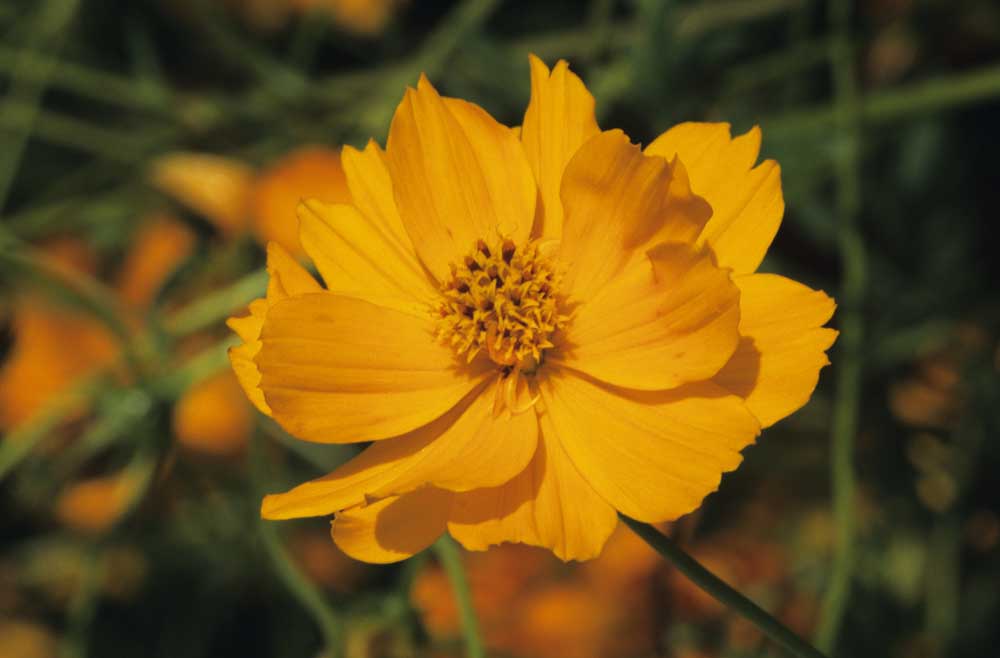Cosmos are an easy, colorful flower to grow
Published 5:58 am Wednesday, June 28, 2017

- (Thinkstock)
A research paper on the cosmos flower stated: “The No. 1 reason everyone should grow cosmos is … growing cosmos is as close as any of us will ever come to actually causing a ‘cosmic event,’ but it will be easy for any of us to produce showy flowers in an orderly arrangement of cosmic proportions.”
Perhaps it would be a good idea to take time to throw out some cosmos seed — they germinate quickly. The flowers would give a royal welcome to all those who come to witness the eclipse on Aug. 21. That might be a cosmic experience. Tending to them would be a positive action and keep our minds from going crosswise with the traffic.
Cosmos, like many other annuals, are pretty easy to grow. They don’t require a lot of special care, so they are perfect for the novice gardener. Experienced gardeners appreciate them for their easy care and almost constant supply of cheery blooms. They do reseed, which some gardeners consider a negative. The simple solution to that is to make sure you remove the blooms before they mature into a seed head.
Spanish priests grew cosmos in their mission gardens in Mexico. The evenly placed petals led them to christen the flower cosmos, the Greek word for harmony or ordered universe.
Although there are 20 known species of cosmos, two annual species, cosmos sulphureus and cosmos bipinnatur, are most familiar to home gardeners.
Cosmos sulphureus (yellow cosmos) is the species native to America. The leaves of the cosmos sulphureus are long with narrow lobes and hairy margins. The flower colors are always shades of yellow, orange or red. The height can range from 4 to 7 feet. The cultivated varieties such as crest red, ladybird dwarf red, ladybird dwarf gold, ladybird dwarf orange, ladybird dwarf lemon and the yellow cosmos-klondyke mix are not as tall.
The flower heads are composed of disc and ray flowers. The disc, or center flowers, are yellow. The ray, or outer petals, range from pale yellow or mustard to orange-scarlet. Red is a relatively recent addition to the color range. The native species is golden-yellow to orange.
Rich soil and excess fertilization will cause plants to produce excessive leaf growth at the expense of flower production. Choose a location that receives at least eight to 10 hours of direct sunlight. Water very sparingly — cosmos is considered to be drought tolerant. The best growers of cosmos practice the “tough love” plant culture, according to John Thomas from Wildseed Farms. Tough-love watering means only watering when the cosmos foliage begins to wilt. Tough-love fertility means very little, if any, soil fertility.
The variety cosmos bipinnatus has leaves that are finely cut into threadlike segments. The foliage looks similar to ferns. The flowers are white or various shades of pink to dark rose. Newer hybrids include double blooms on the double click, the pink-edged picotee, and the crazy petal arrangement of psyche.
With the wide range of sizes and colors, cosmos have lots of design possibilities. The tallest ones make airy, see-through backgrounds and screens for the back of the border, although they may have to be staked. The tall varieties would also do well against a brick wall or fence. A really hot spot might be a rock garden for the shorter ladybird hybrids.
Deadheading is important to keep the blooms coming and to keep the reseeding controlled. The stems are usually too tough to just pinch off so it pays to carry a small pair of scissors with you whenever you go to that area of the garden. If the deadheading gets away from you, cut the plant to about 12 to 18 inches. If you don’t want the plant to reseed, lay a tarp to fit under the plant before you cut it. That way all the debris can fall on the tarp.
Cosmos might be the answer to those gardeners who have space and want color with no fussy culture and — oh, did I mention it is a great pollinator?
— Reporter: douville@bendbroadband.com






